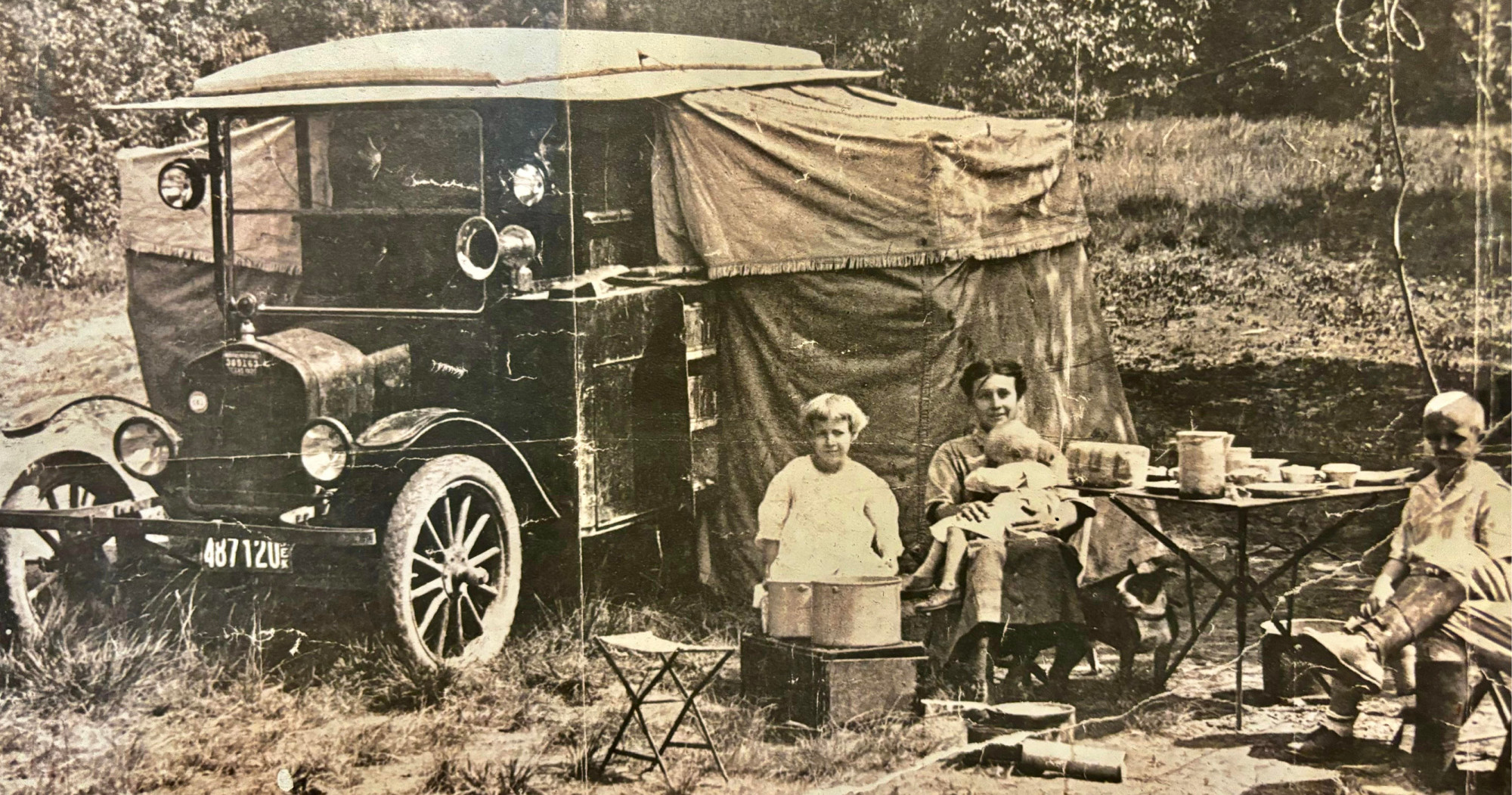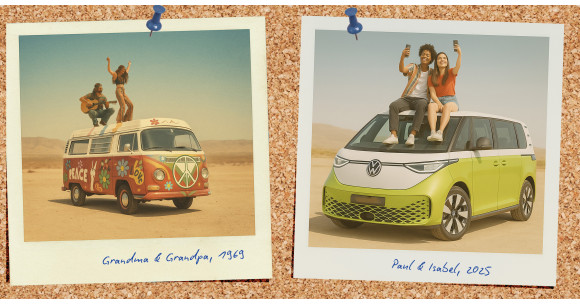From Gypsy Wagons to Volkswagens: A Brief History of Van Life (Part 1: 1900–2000)
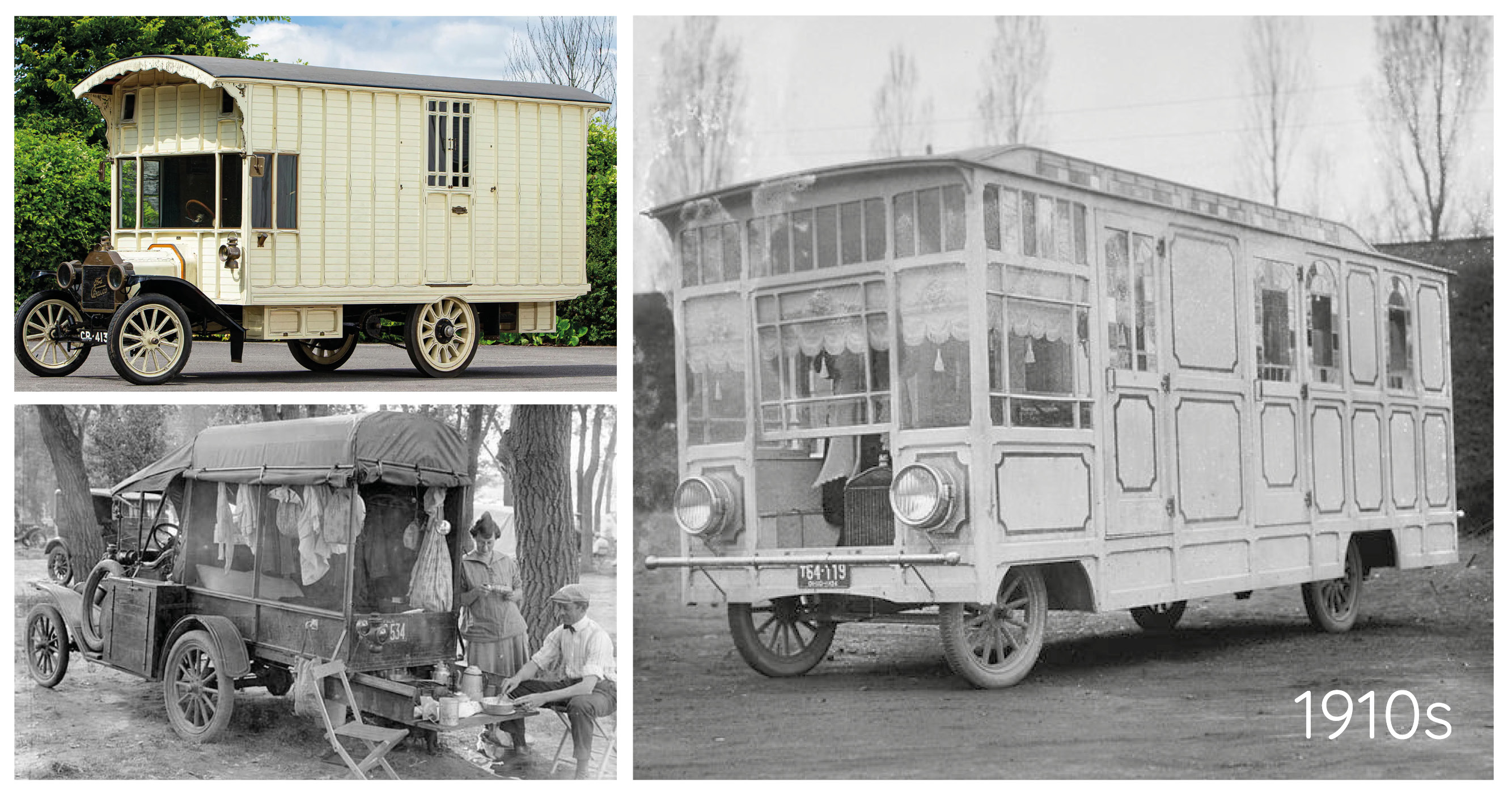
1910s — The First Motor Caravans
At the grassroots, everyday families were already converting Ford Model T chassis into simple campers with canvas tops, fold-out bunks, and makeshift kitchens. These humble DIY builds brought road travel within reach of the adventurous middle class. In stark contrast, at the top end, coachbuilders were crafting beautiful wooden-framed custom motorhomes. A notable example is the 1914 Ford Model T Motor Caravan, (pictured, top left) believed to be the oldest surviving motorhome: based on a strengthened Model T chassis, it featured a full wooden caravan body built by Dunton of Reading for a wealthy British family.
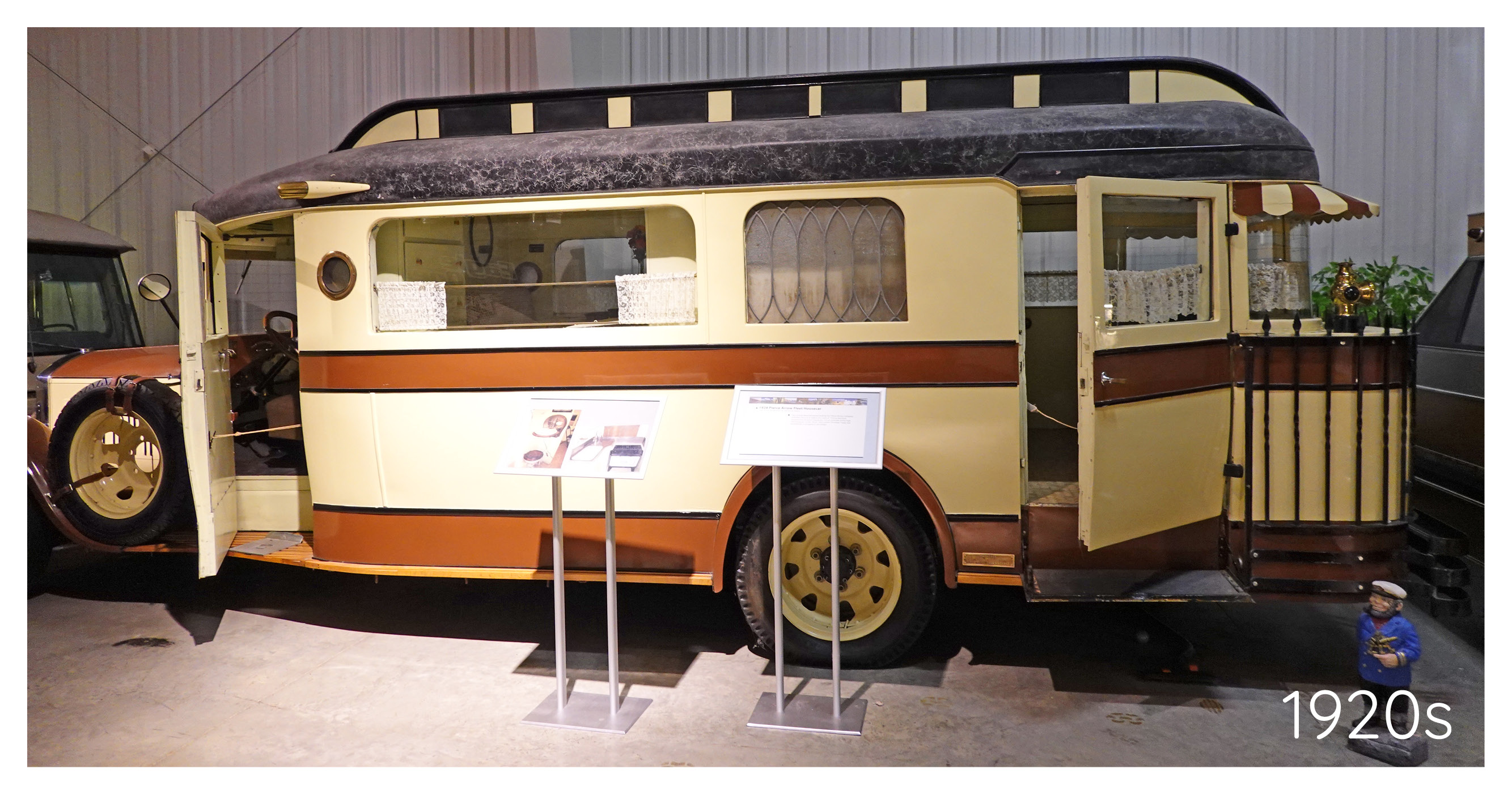
1920s — The Tin Can Tourists
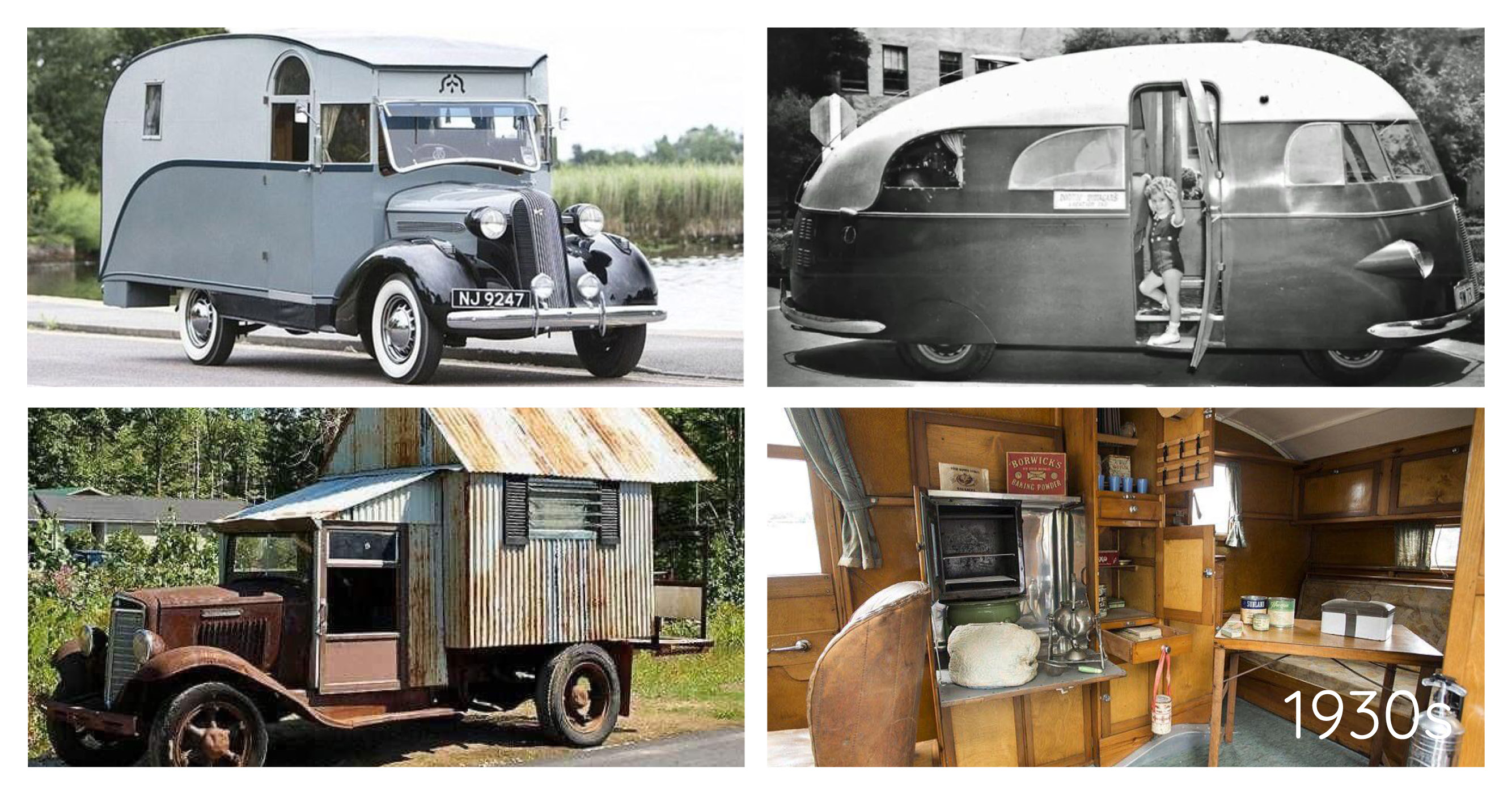
1930s — Bridging the Inequality Gap
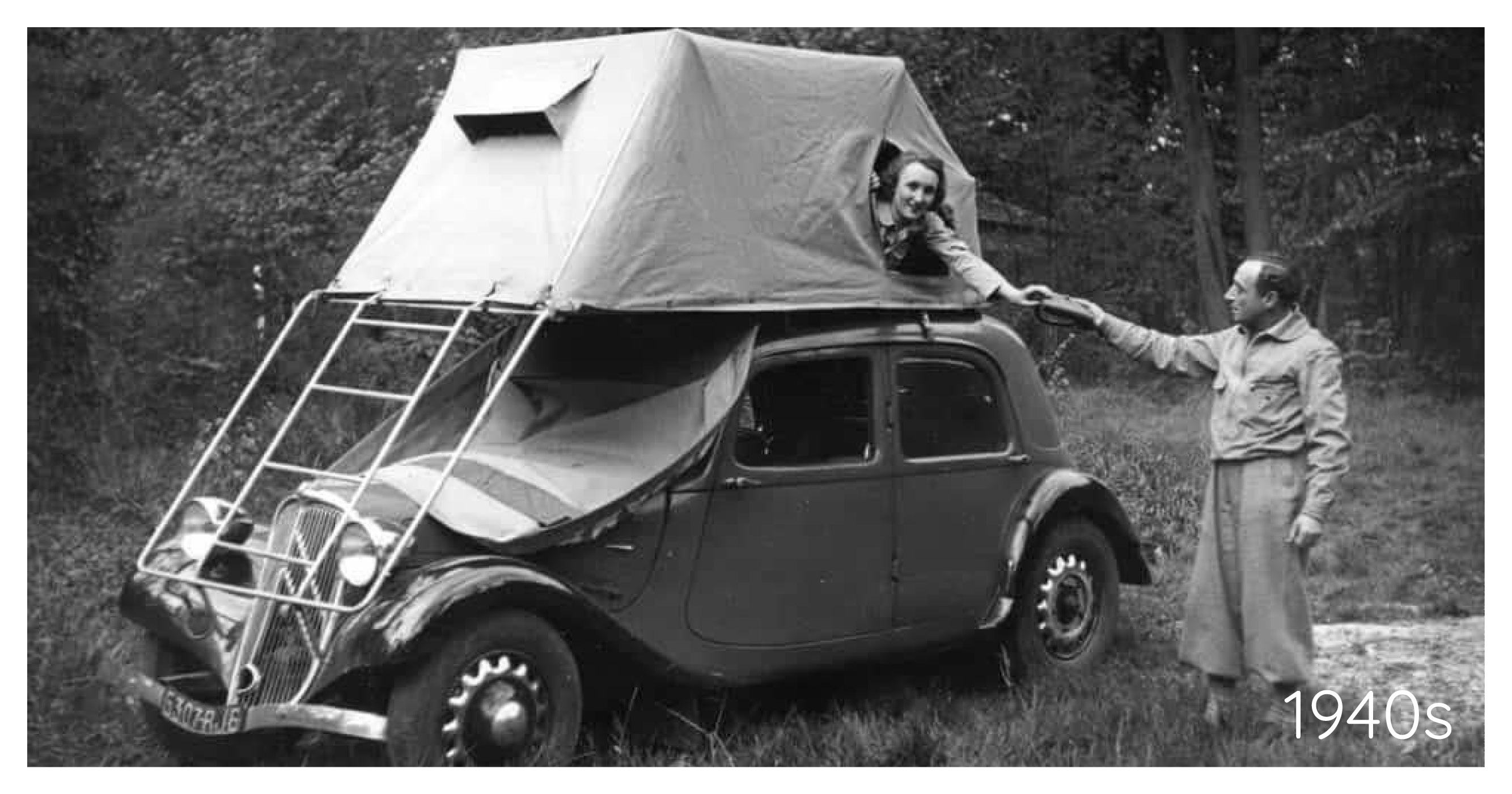
1940s — European Displacement & Reconstruction
Post-WWII, the USA saw veterans transform surplus military vans into motorhomes, driven by a thirst for freedom. Meanwhile, GM’s Futurliner (1940), a gigantic display vehicle for the “Parade of Progress,” influenced RV design with its bold engineering. In France, campers purchased roof-mounted tents to mount on their Citroën cars, for thrifty weekend escapes.
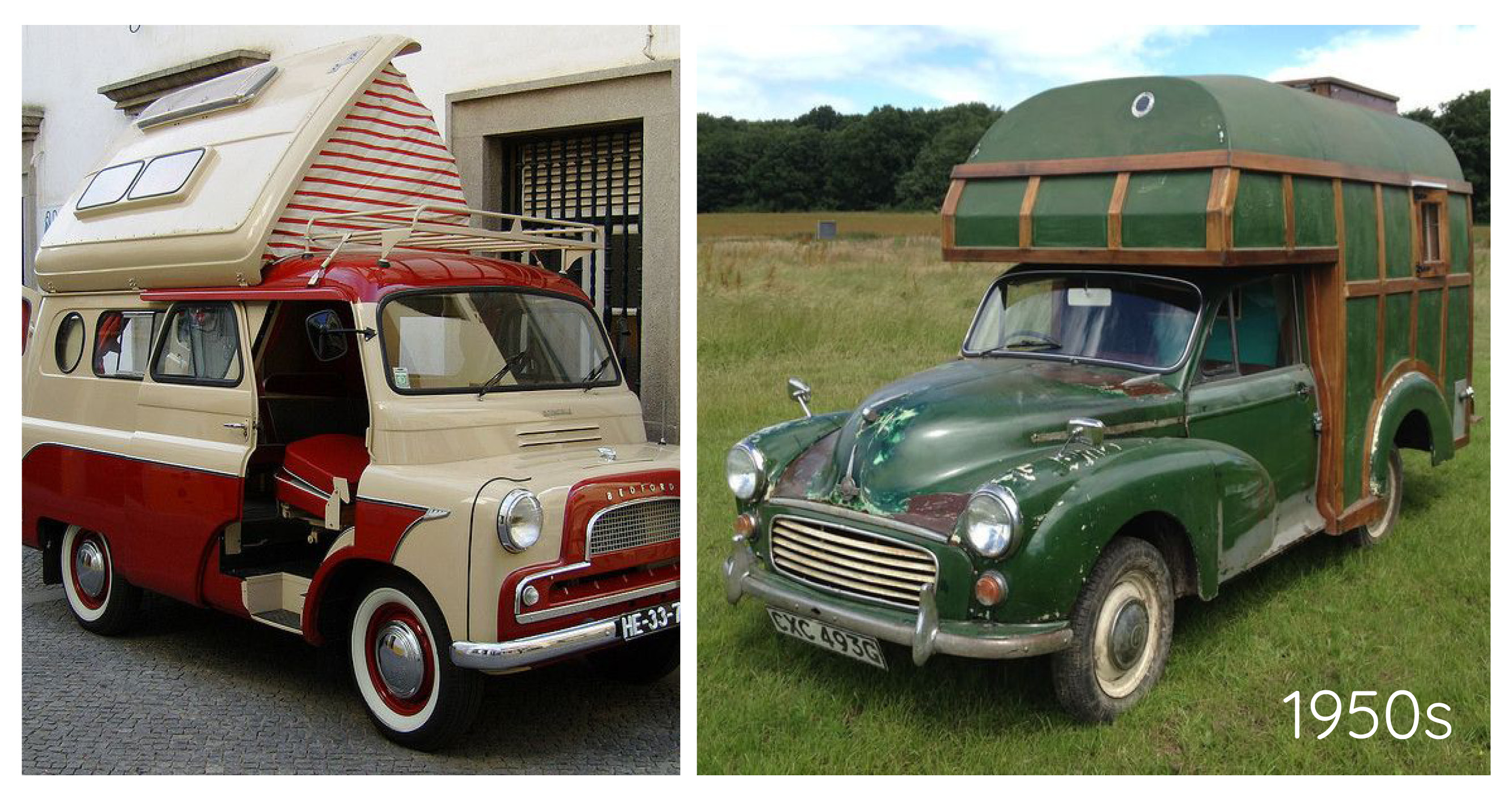
1950s — The Birth of Modern Campervans
Introduced in 1950, the VW Transporter Type 2 (T1) became the prototype for the modern camper. First converted in 1951 by Westfalia, the split-screen “Splitty” offered a sofa bed, fold-down table, and bench seat. Meanwhile, the 1957 Bedford CA Dormobile refined the pop-top concept in the UK, while smaller Morris Minor conversions offered a true “micro-camper” option — together helping make campervans a middle-class staple.
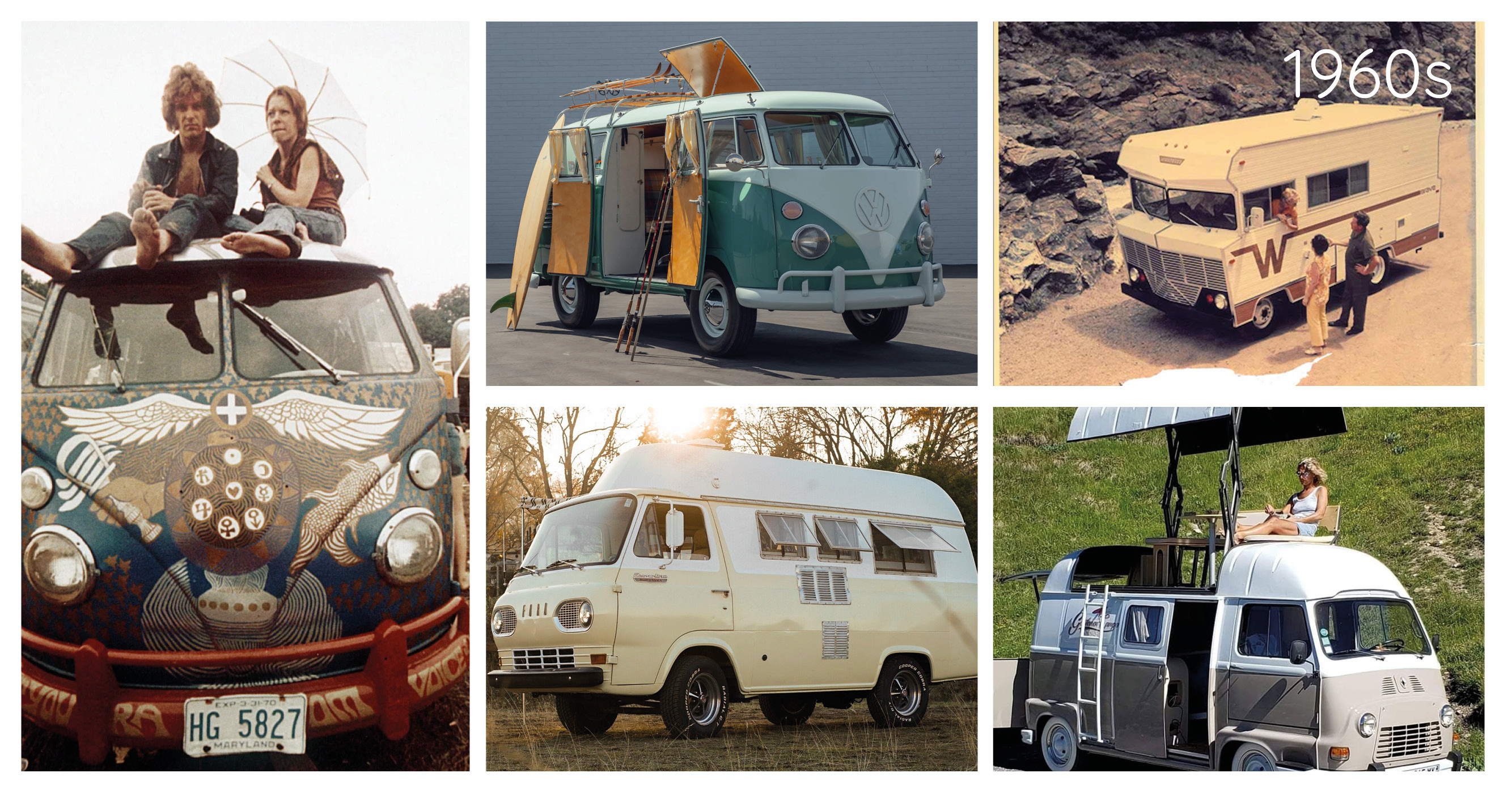
1960s — The Hippie Bus Explosion
Counterculture on both sides of the Atlantic embraced mobile living as the ultimate rejection of suburban conformity, with young Europeans and Americans hitting the road to Morocco, India, and beyond. The Volkswagen Type 2 “Bus” left its middle-class family camper roots behind, re-emerging as half transportation, half symbol of the new counterculture. In France, Renault Estafettes – small, front-wheel drive vans first introduced in 1959 – were the affordable, everyday counterpart to VW’s Westfalia. The 1966 Ford Econoline, with its boxy design and spacious interior, became a favourite for US-based DIY camper conversions.
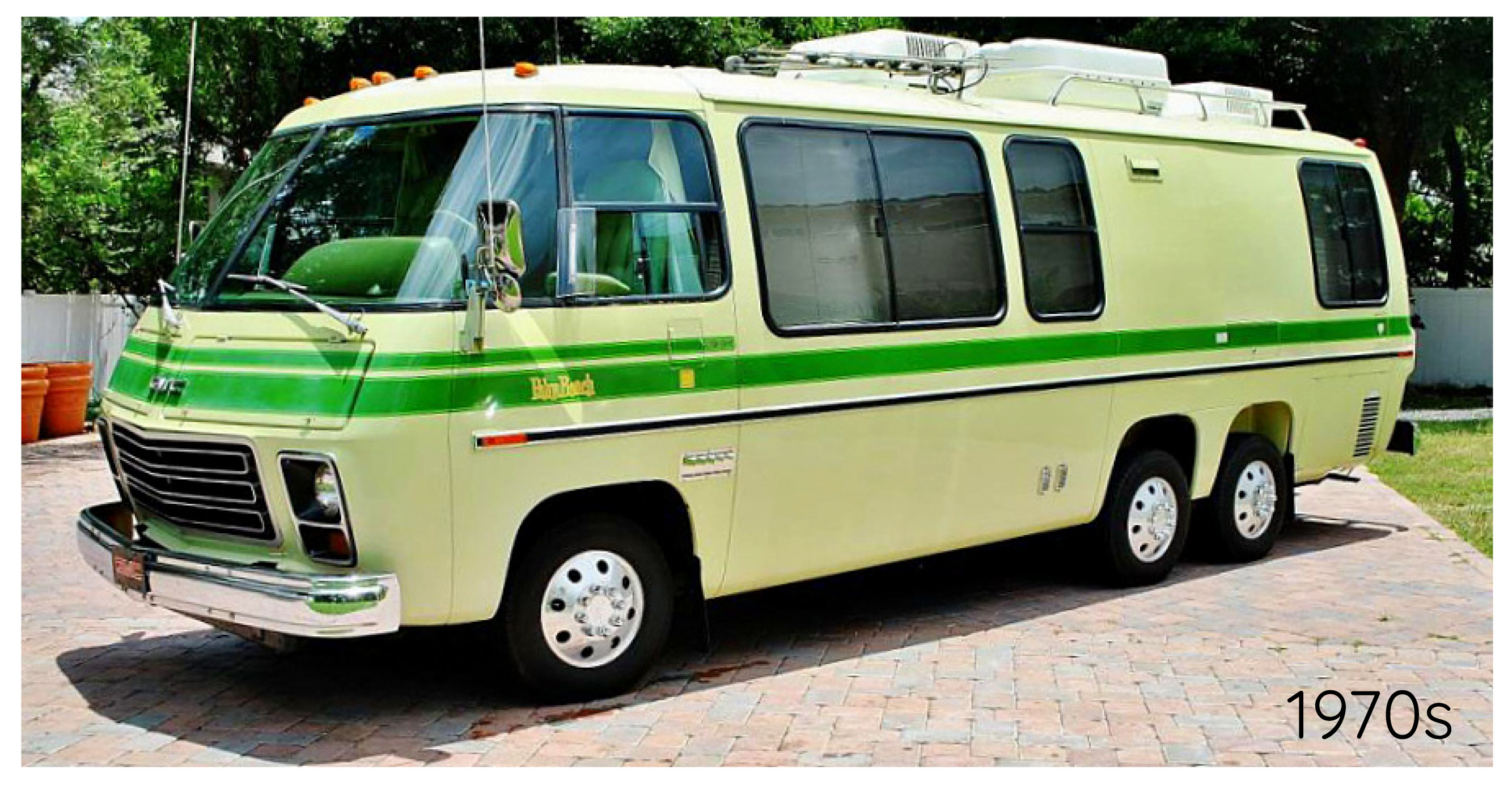
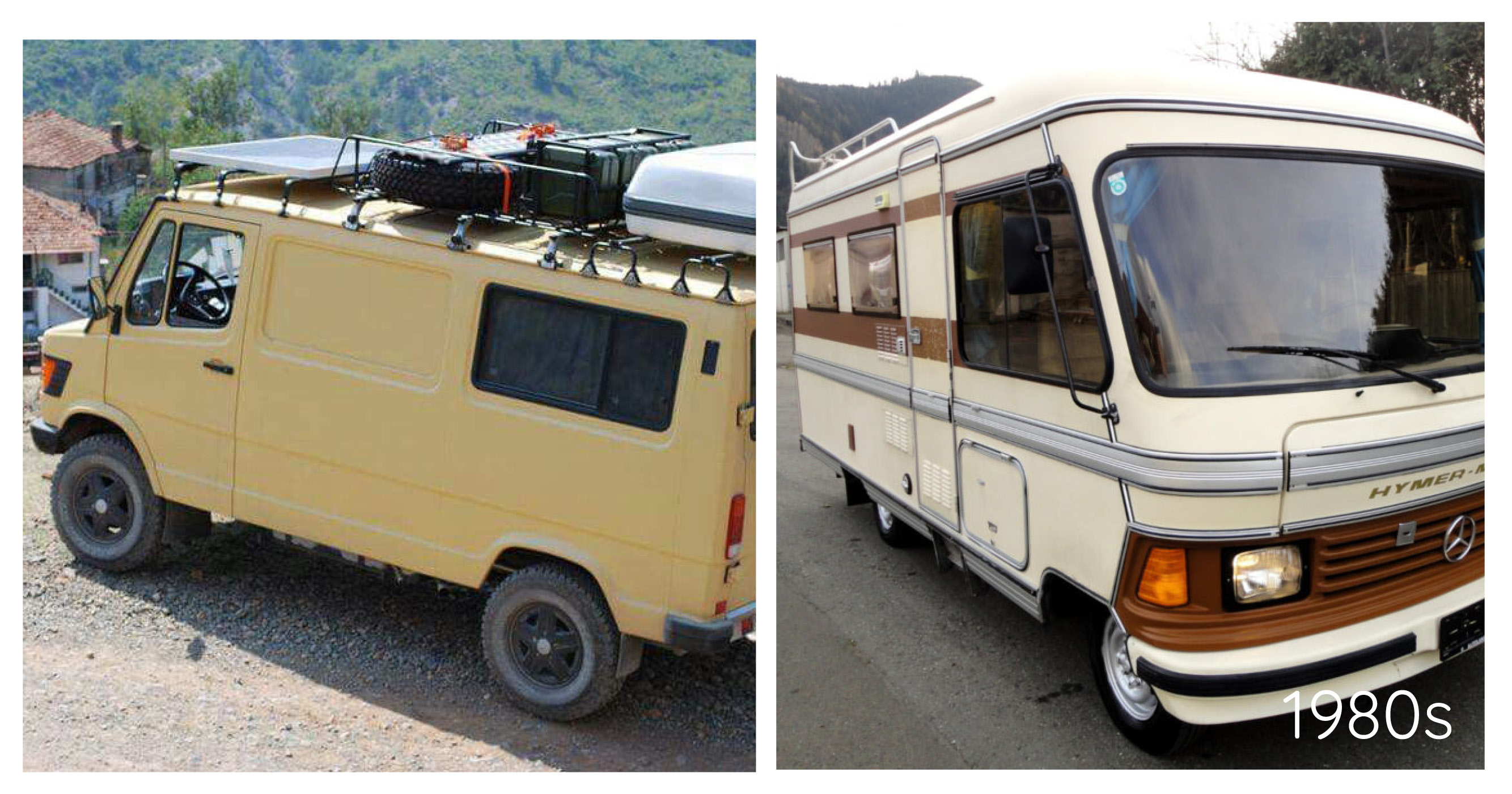
1980s — The Luxury Boom
The USA’s Fleetwood motorhomes brought family-friendly Class A designs with spacious layouts. In Europe, Hymer’s B-Class “Hymermobil” refined the integrated motorhome concept, combining luxury with practicality through pull-down beds and compact kitchens. For the DIYers, the Mercedes-Benz TN (introduced in 1977) became the quintessential European campervan of the decade — German engineering meets wanderlust, with the reliability to handle everything from Alpine passes to Moroccan desert tracks.
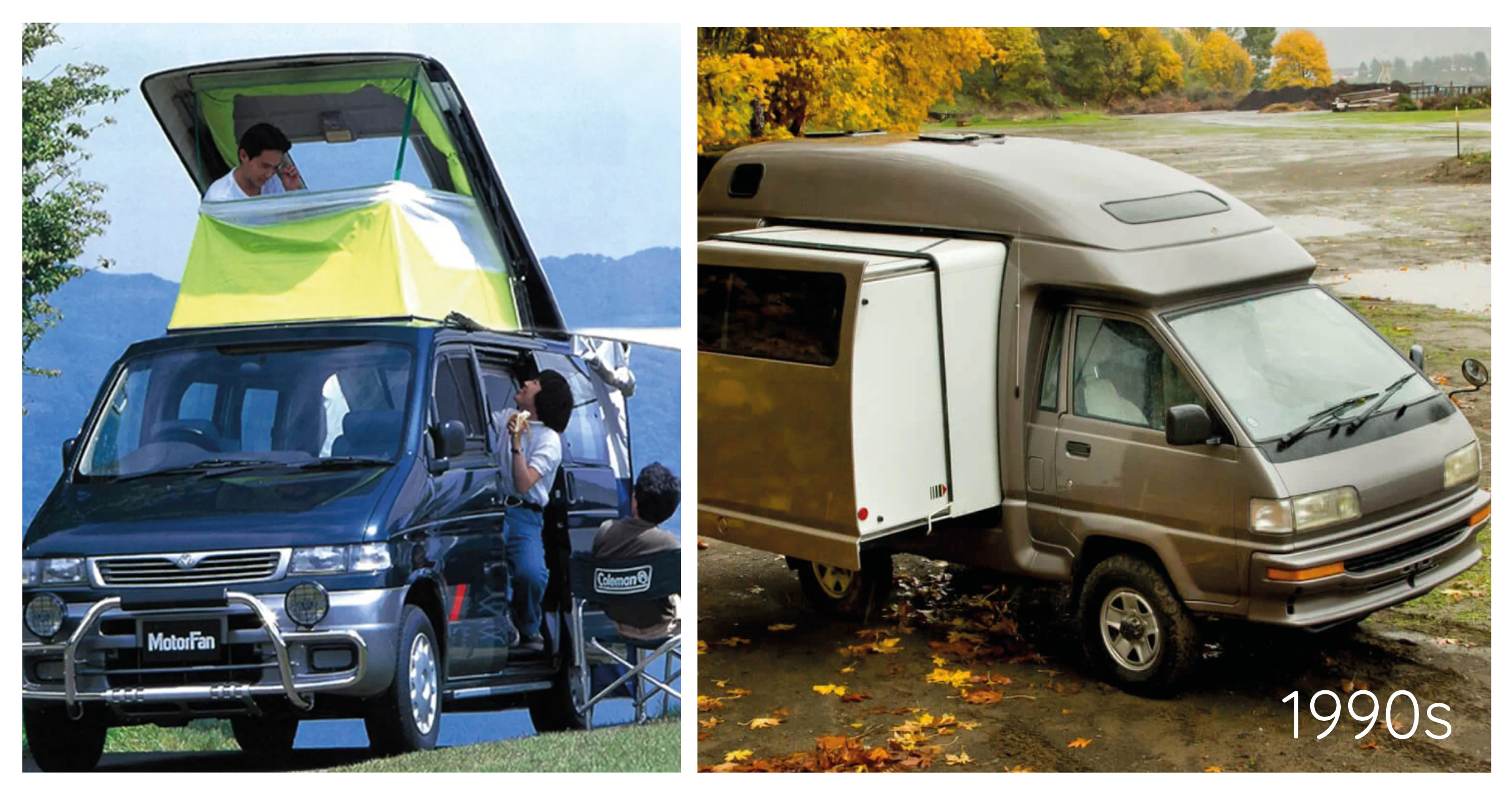
1990s — Adventure Culture
In 1990, the rear-engined VW Transporter (T3) was retired, ending a lineage begun in 1950, and replaced by the front-engined T4. The arrival of the Mercedes-Benz Sprinter (1993) ushered in a new generation of fast, modern, roomy vans perfect for bigger conversions. Compact Japanese campers also gained traction, with the Toyota Campmate and Mazda Bongo (pictured) offering efficient, globalised vanlife alternatives. Outdoor sports culture embraced utilitarian vans for surf, ski, and climbing trips, while European music festivals spawned a nomadic scene of young people following bands from Glastonbury to Roskilde.
Up Next: The Road Ahead
By the end of the 20th century, motorhomes had split into familiar categories: big family RVs in the U.S., compact campervans in Europe, and a bubbling undercurrent of DIY creativity everywhere. But the next chapter would bring a revolution. Social media, plug-and-play technology, and the self-build movement would transform motorhome culture into a global phenomenon.
Which brings us up to the 2000s — and the start of the modern vanlife revolution. Stay tuned for Part 2.


